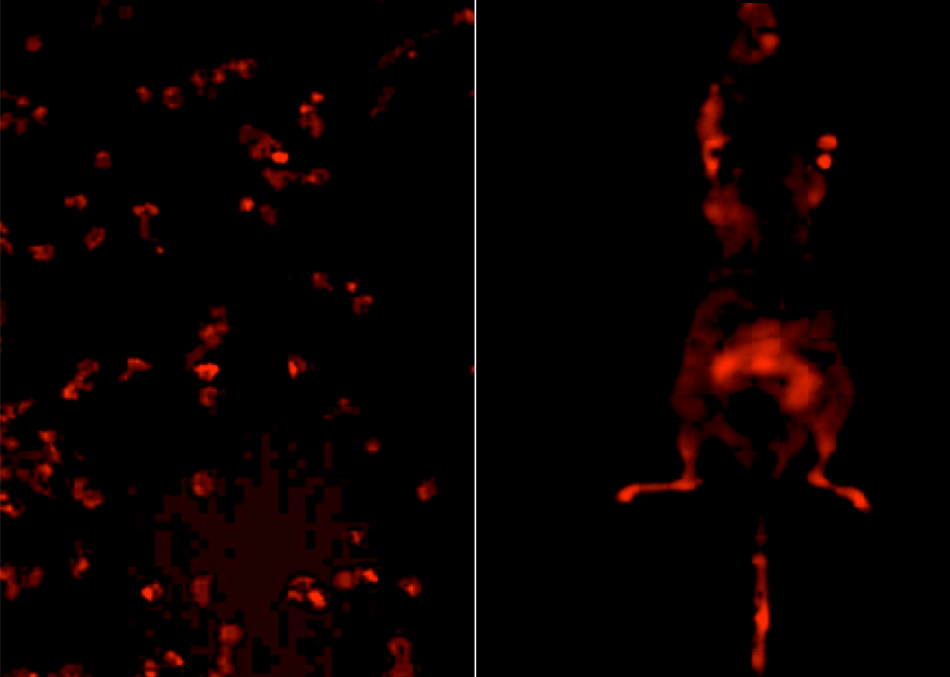Jun 11 2019
When a small town grows fast and disproportionately, the natural consequence is that basic supplies (such as water, sanitation or food available) are not enough to fulfill the needs of all its inhabitants.
 Image of the new biosensors being triggered as they find a low concentration of oxygen in cells (left) and in preclinical models of the disease (right). / CiMUS.
Image of the new biosensors being triggered as they find a low concentration of oxygen in cells (left) and in preclinical models of the disease (right). / CiMUS.
Something similar happens when the tumor cells penetrate a tissue: their unwanted presence causes a substantial increase in the consumption of nutrients and oxygen, which makes unaffordable the supply from the blood vessels to the entire population of cells previously settled in the invaded tissue . But even despite this, tumor cells get to survive by taking advantage of certain mechanisms available in our organism, through which they can increase the number of vessels to obtain the nutrients and the oxygen they need.
At a scientific-clinical level, the possibility of detecting the activation of these mechanisms is an issue of great relevance, since their knowledge allows us to assess the virulence of a specific tumor. In a recent study appearing on peer-reviewed journal Scientific Reports, edited by the 'Nature' editorial group, a team of scientists from research Galician research centers CICA (University of A Coruña), CiMUS and CiQUS (University of Santiago de Compostela) has managed to develop new biosensors capable of reproducing the mechanism triggered by tumor cells when they detect low levels of oxygen.
Or what is the same: scientists have created a replica of their modus operandi when they induce the formation of new blood vessels, which is essential for the arrival of more nutrients and oxygen to the tissue.
The new sensors are endowed with the ability to activate and emit light (that is, to "light up"), which according to researchers facilitates "not only the detection of the tumor, but also the study of its behavior ".